Welcome to the February 2019 edition of the Curious Tea subscription! Let’s look at the four exciting new teas we’re sharing with our subscribers this month.
The first light tea this month is a floral, lightly oxidised Four Seasons Oolong from Doi Mae Salong in northern Thailand that has a crisp and refreshing character.
The next light tea is a complex classic green tea from Anhui Province in China, a fine Lu An Gua Pian.
For the dark side of the selection we have a Darjeeling Second Flush oolong from Gopaldhara Tea Estate that has a captivating fruity and muscatel character.
Finally, the last tea we are featuring this month is a highly oxidised ‘Ruby’ version of our Four Seasons Oolong from Doi Mae Salong that has a warming and fruity profile.
- Light: Santikhiri Four Seasons Oolong and Lu An Gua Pian;
- Dark: Darjeeling Gopaldhara Maharaja and Santikhiri Four Seasons Ruby Oolong;
- Mixed: Santikhiri Four Seasons Oolong and Darjeeling Gopaldhara Maharaja.
Our Discovery subscription boxes contain 10g taster pouches of all of the above mentioned teas. If you are a subscriber you will benefit from a 10% discount on all teas from our tea shop!
Let’s get into further detail on the products featured in our February tea subscription boxes.
Santikhiri Four Seasons Oolong
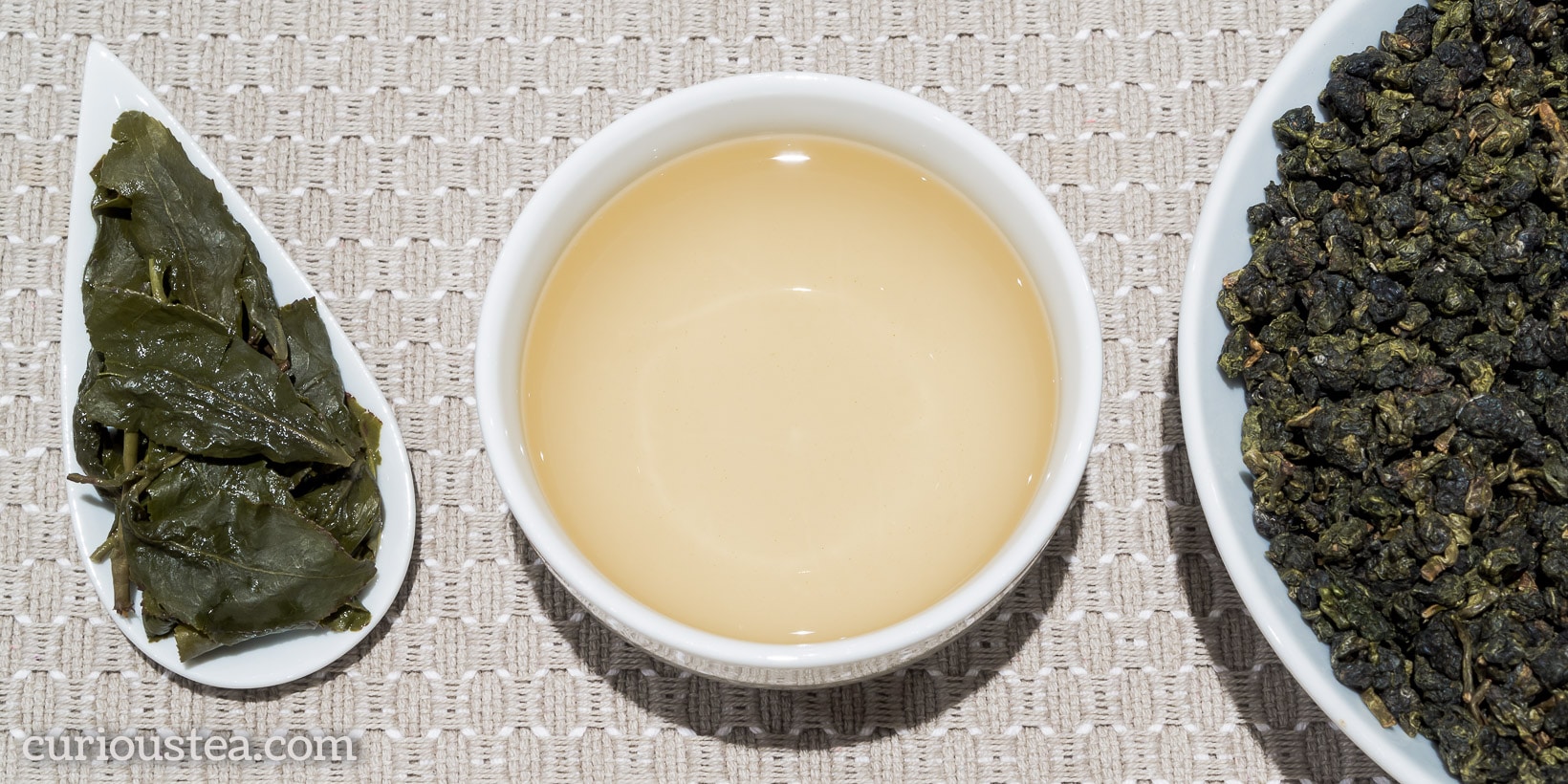
Santikhiri Four Seasons Oolong is a fully organic, lightly oxidised oolong from Doi Mae Salong in northern Thailand. It is a high mountain oolong, grown at an altitude of around 1,200-1,600 metres. It has a refreshing floral character with added verdant and citrus complexity. This lot is from the summer 2018 harvest.
This Santikhiri Four Seasons Oolong comes from an organic plantation located around the village of Santikhiri. The village (formerly Mae Salong) is located in Mae Fa Luang District, around the highlands of Doi Mae Salong mountain, close to the border with Burma and Laos. While previously this area was a centre for the opium trade of the Golden Triangle, since the 1980’s local efforts have resulted in farmers switching to sustainable crops. Doi Mae Salong has now become the centre of a booming tea industry and is home to the best high mountain plantation-grown teas of Thailand.
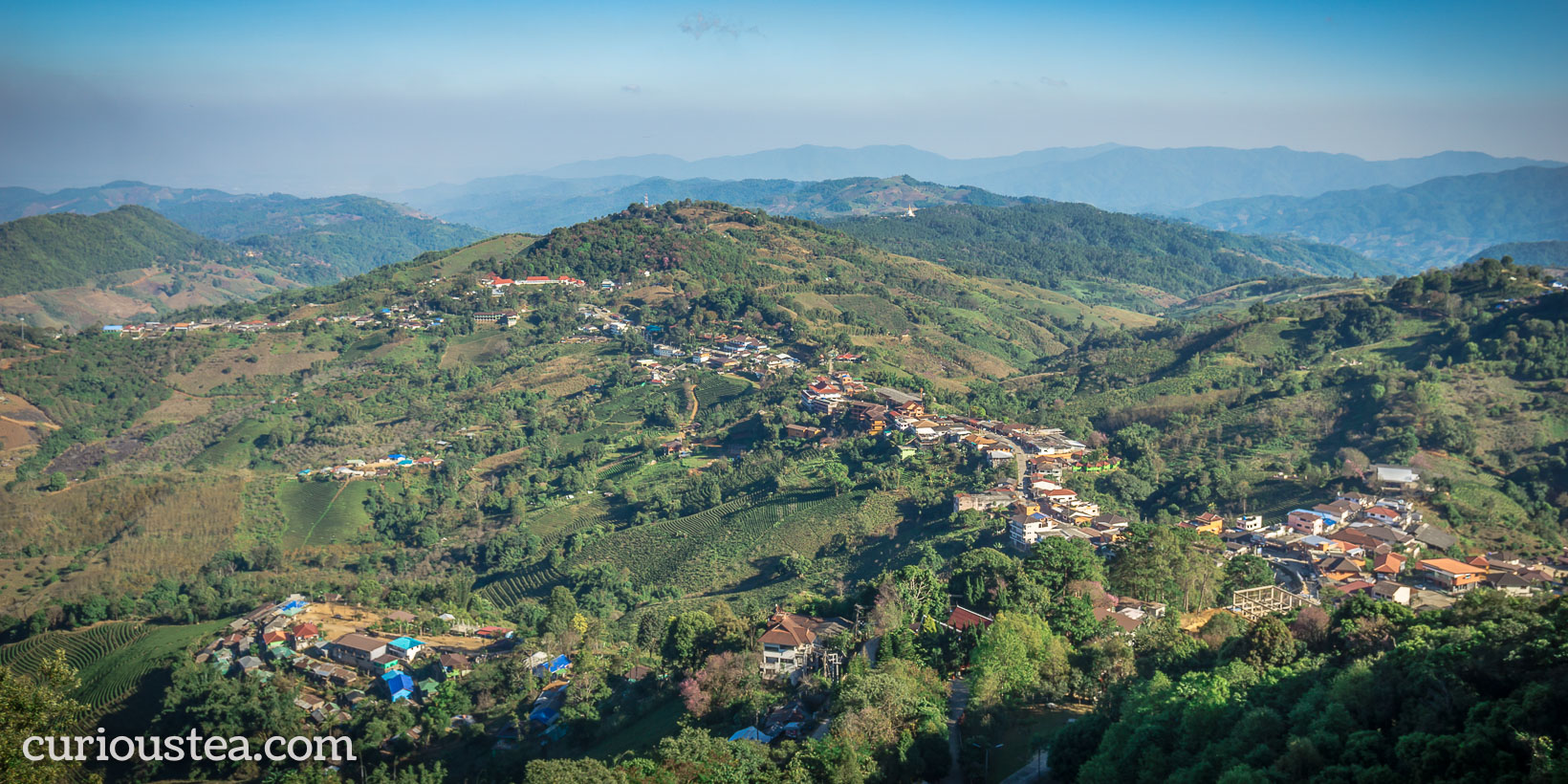
This tea is made from a Taiwanese Si Ji Chun or ‘Four Seasons’ (四季春) cultivar that is especially favoured for lighter floral oolongs. This cultivar is particularly popular in Taiwan amongst farmers growing teas at lower altitude that are harvested year round to produce lightly oxidised floral oolongs. However, due to the growing conditions of Doi Mae Salong, these tea plants thrive in northern Thailand at higher altitude while still producing rather decent oolong teas year round. When compared to a typical low-grown Taiwanese Four Seasons Oolong, the terroir, higher altitude and different processing does alter the profile to a degree. It results in a tea that is perhaps less expressive on the floral notes, instead highlighting some of the more complex verdant and citrus flavours.
This Santikhiri Four Seasons Oolong comes in tightly rolled leaves that open up when brewed. These are mostly green in colour, the result of low-level oxidation. The produced liquor is clear, with a pale gold colour, and a lovely floral aroma. The neutral taste again highlights the light oxidation of this tea, having a verdant and herbaceous character. The tasting notes start on a refreshingly floral aspect, giving way to more drying verdant flavours that are still light and clean. The pleasant and fresh aftertaste has citrus notes that are most reminiscent of orange peel.
Overall, this is an interesting take on a popular Four Seasons Oolong that does away with the punchy floral notes to introduce some refreshing verdant complexity. Our highly oxidised ‘Ruby’ version of this tea, that is also featured this month, has a warming, fruity character and provides a great contrast.
We suggest brewing at 90°C for 3-4 minutes according to your taste. It can be brewed around 3+ times depending on your taste preferences.
You can also buy Santikhiri Four Seasons Oolong tea in our online shop.
Lu An Gua Pian
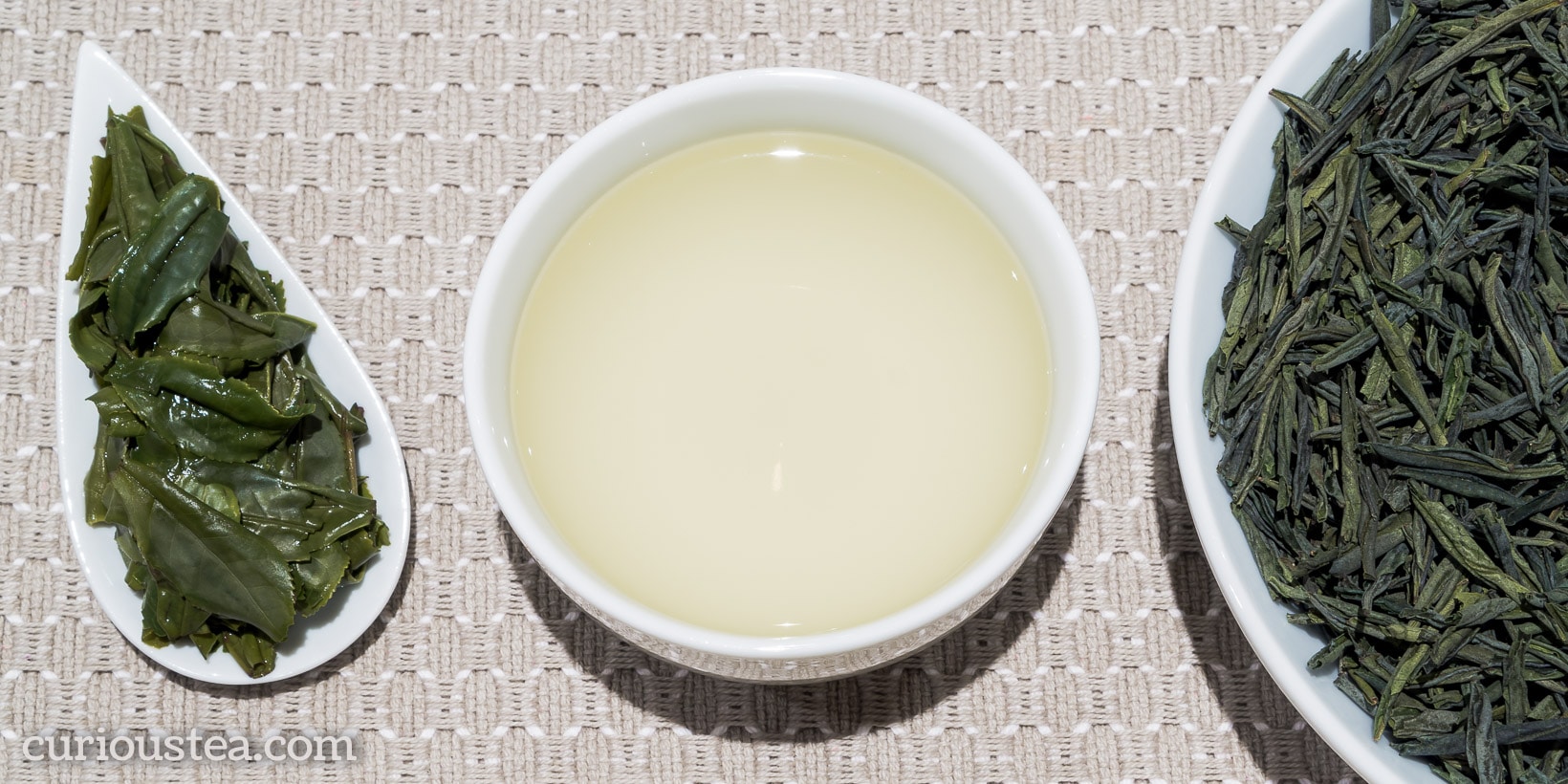
Lu An Gua Pian (六安瓜片) green tea originates from Anhui Province of China. It is featured in almost all lists of ‘China’s Famous Teas’ and is mentioned extensively throughout Chinese tea history. The pan-fried leaf of this famous green tea has a distinct shape, producing a vegetal liquor with a sweet aftertaste. Our Lu An Gua Pian is grown around Qi Tou Shan in Jinzhai County of Lu’an City Prefecture in Anhui Province at an altitude of approximately 600m. This particular lot is from tea harvested in the middle of April 2018.
The name Lu An Gua Pian translates as Lu’An Melon Seed, referring to the origin of this fine tea: the city of Lu’An in Anhui Province. The ‘Melon Seed’ part of the name comes from the fact that the processed tea leaves resemble a melon seed shape when brewed and fully flat and open. So hence this tea has a very descriptive name: Melon Seed from the city of Lu’An.
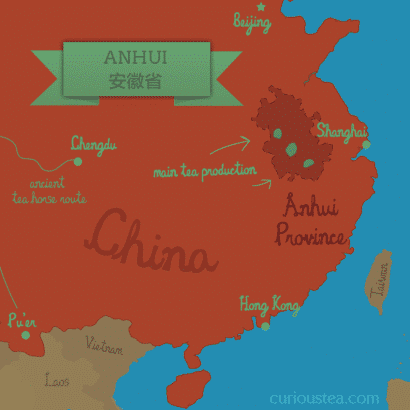
This green tea is also somewhat unusual amongst other Chinese green teas. Most of green teas from China, especially the finer versions, tend to use ‘pure bud’ or ‘one-two leaves plus bud’ standard of picking and processing. Lu An Gua Pian differs in that only the second leaf is used during processing, without the bud. The leaf is also snipped at end, removing the end of the stem, thus resulting in a distinctly shaped leaf.
This Lu An Gua Pian green tea has large and very neat green leaves with an emerald tint in appearance. It produces a bright light green liquor with a fresh vegetal aroma. The flavour has a refreshing vegetal and creamy profile with light grassy notes of spinach. The finish has sweet herbaceous notes that have a slight tangy, peppery and mineral hint. Overall this is a green tea with a classic profile yet a very refined flavour.
This tea is best brewed at 80c for 2-3 minutes in multiple infusions, gradually increasing the steeping time.
You can also buy Lu An Gua Pian green tea in our online shop.
Darjeeling Gopaldhara Maharaja
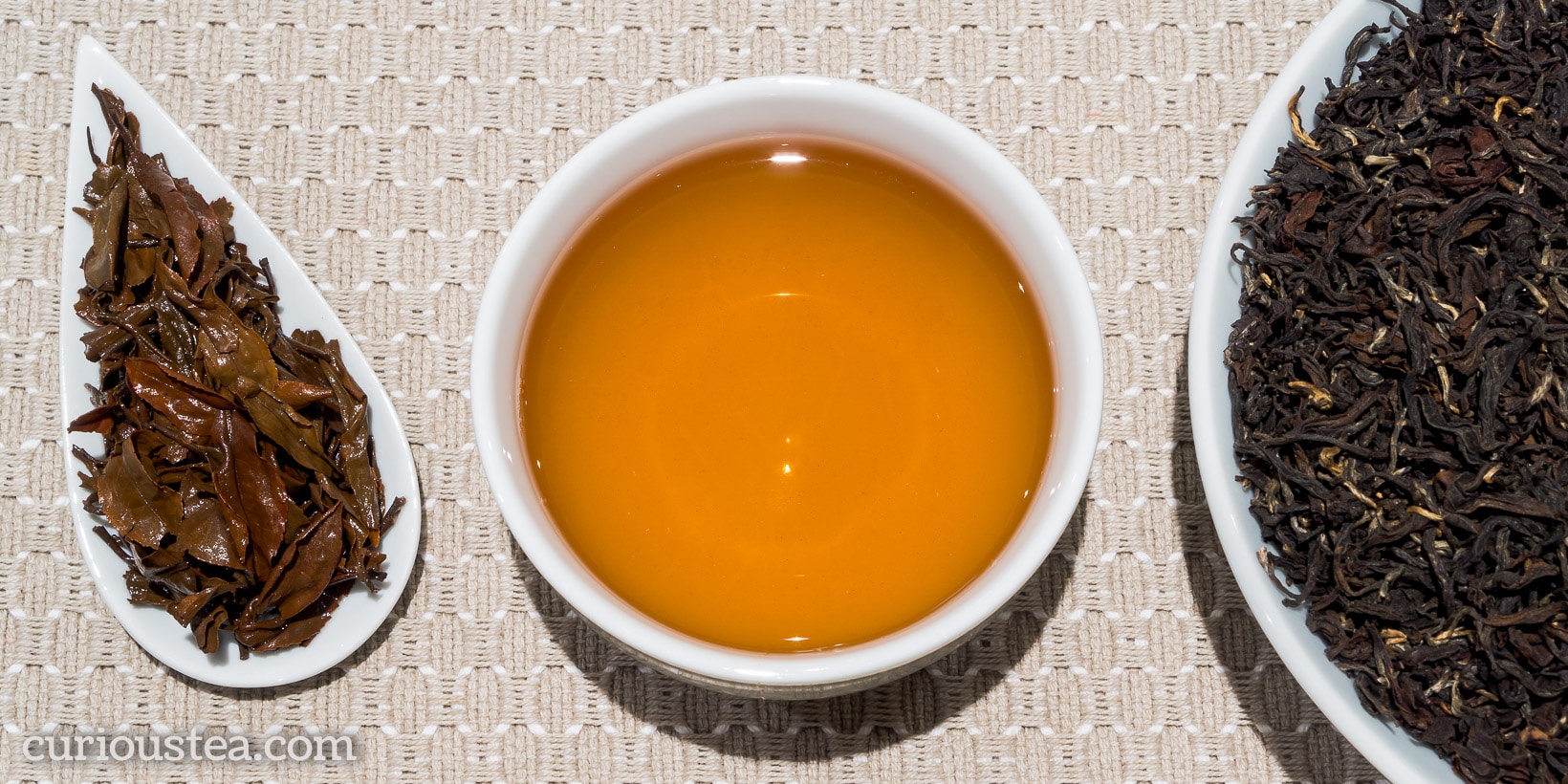
Darjeeling Gopaldhara Maharaja is a captivating fruity Darjeeling oolong from Gopaldhara Tea Estate. This Maharaja, or ‘King of Teas’, is made from leaves harvested from AV2 clonal bushes in early summer. It has a pronounced muscatel character with a refreshing citrus aftertaste. This batch is a FTGFOP1 ‘Wonder Muscatel Gold’ grade from the Second Flush crop picked in June 2018.
Like all our Gopaldhara teas, we source this tea directly from Rishi Saria, the owner and director of Gopaldhara and Rohini Tea Estates. Gopaldhara Tea Estate is nestled in the Mirik Valley, in the Himalayan foothills, and is one of the highest tea estates in Darjeeling with elevations of between 1,700m and 2,100m. It is renowned for producing teas of exceptional quality and very often quite unusual character.

Very much like the classic Second Flush Darjeeling from Gopaldhara, this oolong represents some of the best traits that are sought after in Second Flush teas. This particular Second Flush oolong is processed from AV2 clonal bushes, the cultivar of choice for characterful Darjeeling teas bursting with complex flavours. Being processed as an oolong, it is slightly less oxidised than a classic Second Flush Darjeeling tea, having a lighter body. This allows to bring out some of the more complex flavours from this fine tea. Gopaldhara positions this oolong as a muscatel tea – and we couldn’t agree more – as the real highlights are the characterful muscatel, honey and fruity flavours that dominate this Darjeeling oolong.
Darjeeling Gopaldhara Maharaja oolong has neat mixed leaves with tips. When brewed it is easy to see that the originating material for this tea was exclusively made up from small whole leaves and buds. The liquor produced has a dark amber colour and a fruity aroma. The taste is smooth and easy-going, yet complex. There are the expected honey and muscatel notes that are combined with stony and fruity flavours. There is a lightly mineral edge to this tea, although much less pronounced that on many other Darjeeling teas. The main flavours are nicely rounded by a tangy aftertaste that has notes of lemons and citrus. This oolong has a fully body with a lighter aftertaste, strangely reminiscent of drinking a good light black tea with a slice of lemon!
We suggest brewing parameters of 90°C for 2-3 minutes according to your taste, brewing multiple times. Definitely one to be taken without milk to fully appreciate the finer flavours.
You can also buy Darjeeling Gopaldhara Maharaja oolong tea in our online shop.
Santikhiri Four Seasons Ruby Oolong
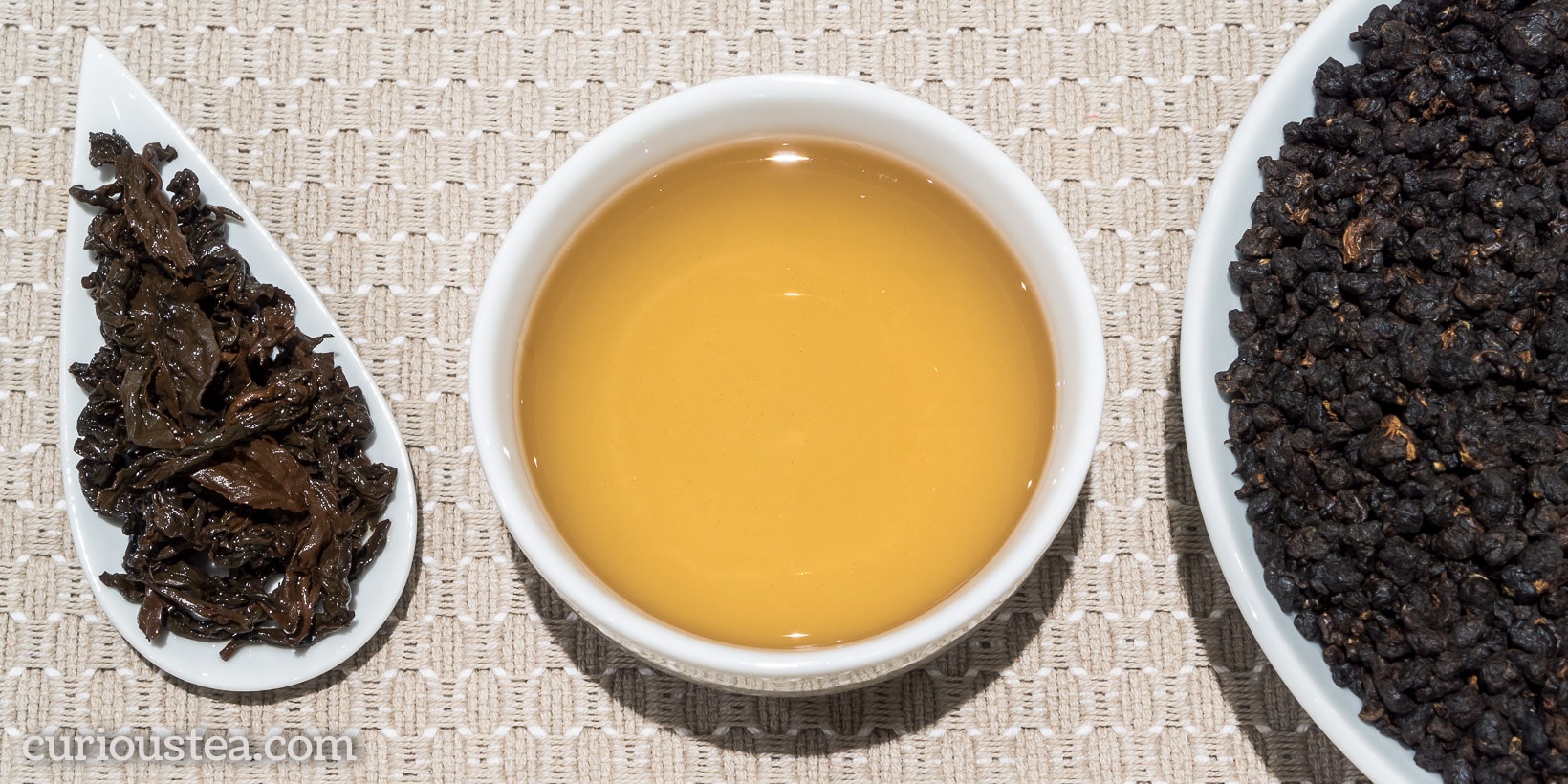
Santikhiri Four Seasons Ruby Oolong is a fully organic, highly oxidised oolong from Doi Mae Salong in northern Thailand. It is a high mountain oolong, grown at an altitude of around 1,200-1,600 metres. It has a warming, fruity character with mineral and honey notes. This lot is from the summer 2018 harvest.
This Santikhiri Four Seasons Ruby Oolong comes from an organic plantation located around the village of Santikhiri. The village (formerly Mae Salong) is located in Mae Fa Luang District, around the highlands of Doi Mae Salong mountain, close to the border with Burma and Laos. While previously this area was a centre for the opium trade of the Golden Triangle, since the 1980’s local efforts have resulted in farmers switching to sustainable crops. Doi Mae Salong has now become the centre of a booming tea industry and is home to the best high mountain plantation-grown teas of Thailand.
This tea is made from a Taiwanese Si Ji Chun or ‘Four Seasons’ (四季春) cultivar that is especially favoured for lighter floral oolongs. It is particularly popular in Taiwan amongst farmers growing teas at lower altitude that are harvested year round to produce lightly oxidised floral oolongs. However, due to the growing conditions of Doi Mae Salong, these tea plants thrive in northern Thailand at higher altitude while still producing rather decent oolong teas year round. The grower of this tea put a further twist on it by increasing the oxidation level. The high degree of oxidation results in a complex tea with a fruity character that sits much closer to a black tea. However, unlike our Santikhiri Ruby Ruan Zhi black tea, this one is still firmly rooted in the oolong tea category. The best point of comparison for this tea would be our popular Four Seasons Red Oolong from Taiwan.
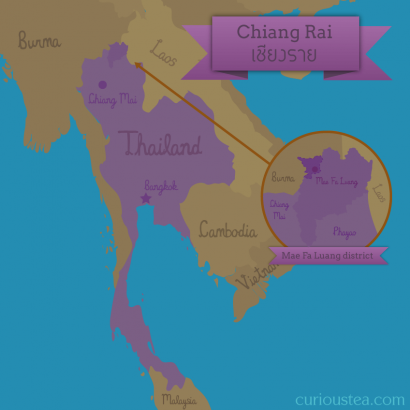
This Santikhiri Four Seasons Ruby Oolong comes in very tightly rolled leaves that resemble black pearls. The addition of ‘Ruby’ in the name clearly hints at the colour of both the leaves and the liquor of this highly oxidised oolong. As the leaves begin to open up when brewed, they produce a golden amber liquor with good clarity and brightness. It has a full-bodied aroma with a lightly roasted, honey and mineral fragrance that resembles stewed fruits. When compared to the aroma, the taste is lighter, with a warming wild honey and slightly mineral flavour. There are notes of herbs, sultanas and stewed fruits. The aftertaste is clean and comforting. This is a very easy tea to drink, a pleasurable choice for a relaxing afternoon.
We suggest brewing at 90°C for 3-4 minutes according to your taste. It can be brewed around 3+ times depending on your taste preferences. As the leaves are very tightly rolled we suggested a slightly longer brewing time on the first infusion to allow the leaves to open up for subsequent shorter steeps.
You can also buy Santikhiri Four Seasons Ruby Oolong tea in our online shop.
We really do hope that you enjoy the tea selection for February and are looking forward to the next selection in our March box!
If reading this has made you curious about our teas, but you don’t yet subscribe to a monthly tea selection, you can sign up for our tea boxes in just a few clicks. We ship worldwide from London, UK.
We always love to hear from you, so if you have any questions, suggestions or just want to chat about tea, email us at contact@curioustea.com, via our Facebook page or via Twitter.
You can also follow us on Instagram for pretty tea photos.
Happy tea discoveries!

